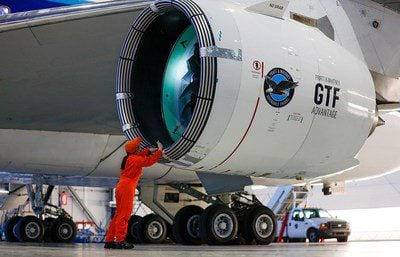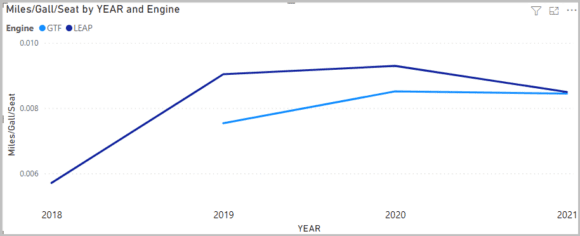
GTF a
P&W’s PR: The Pratt & Whitney GTF Advantageengine for the Airbus A320neo family further extends the economic and environmental benefits of the existing GTF engine. The GTF Advantage configuration reduces fuel consumption by an additional one percent, extending the engine’s lead as the most efficient powerplant for the A320neo family.
In total, the engine decreases fuel consumption and CO2 emissions by 17 percent compared to prior-generation engines. Additionally, the GTF Advantage engine will be compatible with 100 percent sustainable aviation fuel (SAF) at entry into service, helping the industry meet its commitment to net zero emissions by 2050.
This new configuration delivers higher thrust, both at sea level and for “hot and high” airports. With up to 34,000 pounds of takeoff thrust per engine, the Advantage configuration makes GTF the most powerful engine for the A320neo family. The higher thrust rating enables increased range and payload, unlocking more destinations for airlines.
The current generation of Pratt & Whitney GTF™ engines for the Airbus A320neo family reduces fuel consumption and carbon emissions by 16 percent compared to prior-generation engines and are certified to operate on 50 percent SAF.
This news means P&W might be able to improve its fuel burn and take the lead in this engine category again. The following chart show CFM has been able to improve its LEAP’s fuel burn. The GTF was the fuel burn leader in this engine segment. But the latest data shows the two are about equal – the GTF is at 0.0084 Miles/Seat/Gallon and the LEAP is ai 0.0085.
An improvement of 1% in fuel burn should take the GTF to 0.008484. This is not a marginal improvement. The R&D required to reach that 1% is huge. The following table helps to provide more context – the way the engine is used helps to drive fuel burn improvements.
What we can see is that Hawaiian, using GTFs on its A321neo fleet, is achieving the strongest results.
Views: 34






